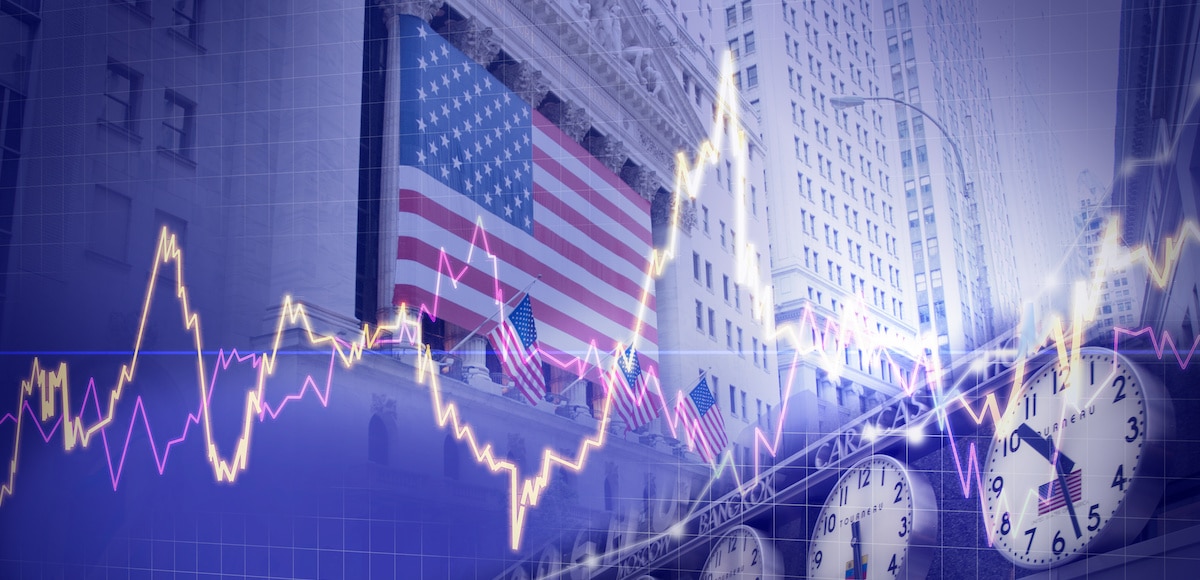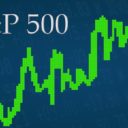

Markets concept depicting the American flag draped over the New York Stock Exchange (NYSE) at Wall Street. (Photo: AdobeStock)
Stocks started the week on a sour note with losses on Major Market Averages ranging from the S&P 500 (^SPX) down -2% to the NASDAQ Composite (^IXIC) losing -2.8%.
As highlighted in our note last week, volatility has become the one constant market dynamic in a market that throws around +/-1% moves like Jager shots at a Santacon bar crawl, while +/-2% moves only make the evening news if President Trump is blaming the decline of one of his favorite foils.
Unlike many market declines, where the market leaders and bellwethers hold up much better than the broad market for most of the decline, this selloff has featured the opposite. Whether it’s technology, financials, or diversified multinationals, it’s been the big marquee names that continue to contribute to a majority of the damage in the market averages.
Again, bellwether technology names led the decline, most notably Apple Inc (^AAPL), following cautious comments on revenue guidance from a major supplier. AAPL, -5% on Monday to $194.17, has declined -12.5% since its earnings report on November 1, when it stated in its conference call that it would no longer give monthly unit sales data for individual product lines.
Amazon Inc. (^AMZN) was a leading contributor to the selloff, losing 4%, to close at $1636.85, but still well above the October 29 close of 1538.88.
Financials were also a major source of investor angst.
Goldman Sachs Group Inc (^GS) suffered its largest single day percentage decline since August 2011, losing -7.5% on Monday, and -10.8% over the last 2 days. Goldman closed at $206.05, right on its 200 day Moving Average, and its lowest level in 2 years. Goldman is embroiled in a massive scandal involving a billionaire financier in Malaysia and the 1MBD investment fund. Stay tuned on this, it’s only the 1st inning.
General Electric (^GE) is nowhere near the gold standard of industrial diversification it set for prior decades, but there is no way to sugarcoat losing 12% on its market cap in the last 2 days, and -21% month to date. Given, the challenges in any potential turnaround/restructuring are well publicized, this is still an iconic American brand with over 300,000 employees.
While GE is no longer in the Dow Jones Industrial Average (^DJI), and it’s price decline of 50% YTD has reduced it to a 2nd tier name at best in the market capitalization weighted S&P 500, it’s still very disturbing to watch the continual erosion of a former market leader.
Boeing (^BA) is today’s distress stock du jour, where the issue involves their lack of disclosure around a new flight control feature that went awry, potentially leading to at least 1 air traffic disaster. As BA stock trades in the mid $300s, double digit price moves do happen on occasion.
With declines during the morning ranging from -$7 to -$15, BA has clipped anywhere from 50 to 120 points off the Dow during trading Tuesday morning.
At its morning lows, combined with a loss of $12.30 on Monday, BA was -7% lower over the last day and a half. This story demands a lot more clarity. If the reality the error/omission by Boeing were as bad as the raw headline, my gut feeling is the losses would be much steeper than we’ve seen so far.
Two hours into trading on Tuesday, the S&P 500 and NASDAQ composite are higher by close to +1%.
Unconfirmed reports that the European Union (EU) and United Kingdom (UK) are very close to an agreement on Brexit terms are the predominate positive fueling the morning rally. As we’ve been down this road with Brexit negotiations before, a “We’ll believe it when we see it” approach is warranted. There remain multiple moving parts among potential market influencers this week. Stay tuned.






